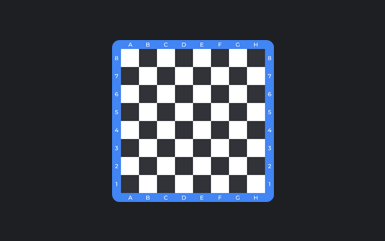
The King Chess Piece – Starting Position, Movements, Values, and Role
The King Chess Piece – Starting Position, Movements, Values, and Role
In the royal game of chess, the King is the most vital piece. It’s the heart of the game. The object of the game is to threaten the opponent’s King with capture, or ‘checkmate.’ In this blog post, we delve into a detailed overview of the King, its characteristics, movements, and importance in the game of chess.
What is a King?
The King in chess is the most important piece for each player. Its capture, or the threat of capture, determines the outcome of the game. While not the most powerful in terms of movement abilities, the King’s safety and strategic positioning are paramount to any successful chess strategy.
Where does the King Start on the Board?
In standard chess setup, the King starts on the e-file. In algebraic notation, the white King starts on square e1, while the black King begins on e8.
What is the Role of the King in Chess?
While the King is often protected for most of the game, it’s not a passive participant. In the endgame, the King can become a vital piece in executing checkmates and supporting pawns to promote into queens.
How does the King Move on the Chessboard?
The King can move one square in any direction – horizontally, vertically, or diagonally. This means that, except for the board’s edges, the King always has up to eight possible moves.
How much Points is King Worth?
In the traditional point system, used to denote the value of pieces, the King is technically priceless, or invaluable. This is because the game’s objective is to checkmate the King, not to capture it. Once the King is checkmated, the game ends.
Are there any Special Rules for the King?
Yes, there are a few special rules for the King.
What is Castling?
Castling is a unique move that involves the King and one of the Rooks. This move allows a player to do two important things: get the King to safety and connect the Rooks.
How to Castle with the King?
To castle, the King moves two squares towards the chosen Rook, and then the Rook jumps over the King to the adjacent square. Keep in mind that there are certain conditions to be met for castling to be legal.
How to Maximize the King’s Potential in Chess?
In the early game, it’s typically best to keep your King safe, often through castling. However, in the endgame, the King can become a potent offensive piece, helping to control crucial squares and support pawn promotion.
What does it Mean When the King is in Check?
When the King is in a position to be potentially captured in the next move by one of the opponent’s pieces, it is said to be ‘in check.’
How to get your King Out of Check?
You have three options to get out of check: move the King to a safe square, capture the threatening piece, or place a piece between the King and the threatening piece.
What is Checkmate in Chess?
Checkmate happens when a King is in a position to be captured (in check) and there is no legal move that player can make to remove the threat of capture on the next move. Checkmate effectively ends the game.
What is a Stalemate in Chess?
Stalemate is a situation in the game of chess where the player whose turn it is to move is not in check, but has no legal move. In this case, the game ends in a draw.
Are there any Alternative Names for the King Chess Piece?
In different languages and cultures, the King piece has different names. For instance, in Spanish, it’s called ‘
“Rey,” in French, “Roi,” and in German, “König.” However, in the standard English language and rules, it is universally recognized as the King.
Conclusion
The King may not be the most powerful piece on the board in terms of movement, but it is undoubtedly the most crucial. Understanding the unique properties, movements, and importance of the King is key to improving your chess game. Its safety often determines the outcome of a game, and yet, it can become a mighty warrior in the endgame. Therefore, mastering the strategies associated with the King is critical to becoming a better chess player.




 Protected by Patchstack
Protected by Patchstack
Recent Comments